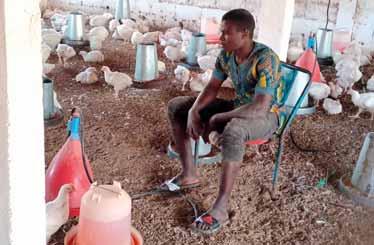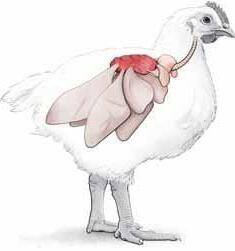
3 minute read
Types of broilers
Anatomy
lungs nostrils
Advertisement
nasal cavity:
consists of several interconnected chambers.
windpipe anterior air sacs parabronchi lungs
bronchus posterior air sacs
Inhaling
The air sacs inflate as the body cavity expands and air is drawn from the beak into the posterior sacs. At the same time, the air that was in the lungs is drawn into the anterior sacs.
air sacs
beak opening
windpipe:
windpipe
Exhaling
anterior air sacs parabronchi lungs
reinforced with cartil-age rings to prevent it from closing during breathing. Branches into two smaller tubes (bronchi).
bronchus posterior air sacs The air in the posterior sacs is pushed into the lungs, where gas exchange takes place. The air from the anterior sacs is also exhaled now. This creates a non-stop, one-way flow of air through the lungs.
The windpipe is more than just a hollow tube
The incoming air is freed from impurities in three ways: 1. The mucous lining traps impurities. 2. Cilia push impurities back up to the throat, but other substances such as particulates and bacteria can penetrate further into the respiratory system.
3. Immune cells in the lungs that kill harmful pathogens. If the cilia are not functioning properly, harmful pathogens can penetrate deep into the body because the air sacs are distributed throughout the body. This is different from mammals, in which these organisms don’t get further than the lungs. Inhaled air is cleaned by cilia in the windpipe which work mucous and any adhered particles back up to the beak.
Contact with irritants such as formalin in the hatcher affects the cilia, stopping the mucous lining from moving and causing it to thicken. Harmful particles remain enclosed in the stationary mucous lining.
cilia tissue These harmful particles infect the underlying tissue.
mucus layer
NH3 formalin dust copyright protected
Signals of respiratory infections
Early infection, runny nose, half-closed eyes Advanced respiratory problem Severe infection: nose and eyes are completely closed
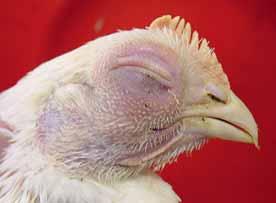
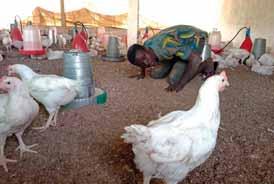
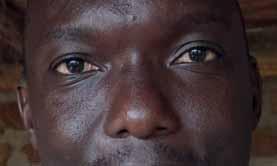
Indoor climate
The dust in a broiler house comes from the feed, the skin and the feathers, but also from the litter and dry manure. Dust irritates the airways and can carry large numbers of pathogens such as E. coli, Salmonella or viruses like Gumboro. Stale, pungent or ‘heavy’ air in the broiler house is a sign of poor ventilation. The bottom layer of litter may be damp, even if the top layer is dry and loose. This often indicates a cold surface underneath. If ventilation is poor, moisture and unwanted gases (e.g. CO2, NH3 and methane) are not being removed effectively. The higher the stocking density, the more you need to do to keep the litter in good condition: the birds cover the litter like a warm blanket and the ventilation doesn’t reach the litter. If you don’t intervene, the litter will continue to If the nasal cavity gets infected the nostrils will fill with pus and swell up. The infection can spread, causing moisture to accumulate under the skin, sometimes so badly that the eyes are forced shut. These birds won’t be able to find food and drink. This is caused by bacterial infections, often secondary to a viral infection like TRT.
heat up. More ammonia and fatty acids will form, and you’ll be able to smell the house from quite a distance. Even low concentrations of ammonia (10 ppm) can damage the cilia in the windpipe, causing excessive mucous production. Harmful organisms can now easily penetrate into the respiratory system. The result: lower slaughter weights and poor feed conversion. Before you can smell ammonia you can feel it in your eyes. If your eyes start burning or watering, this is the first sign of poor air quality. Always go down to bird level to really assess the climate the bird experiences. copyright protected
You can’t see dust
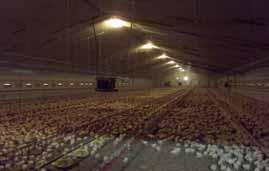
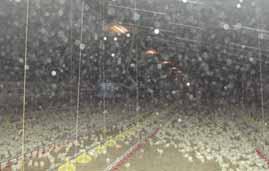
Dust is bad for humans and animals alike. At first glance you may think it’s not that bad in this house (left), but if you take another picture using flash it becomes clear how much dust there really is (right).

